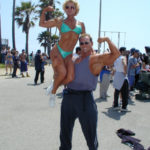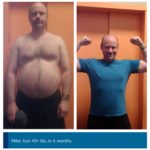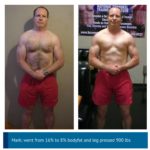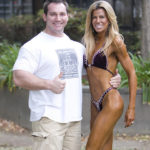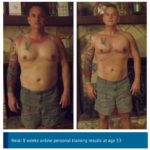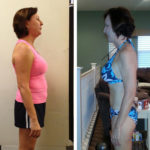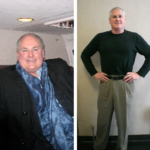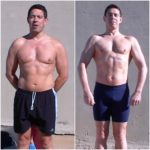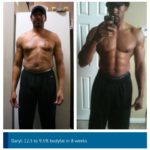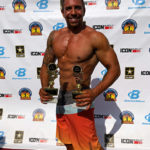Over 50 Personal Training | LA Trainer
A lot of people in their 50s are in the prime of their careers. Years of hard work have paid off in terms of professional achievement and, with children in college or just finishing high school, they look forward to a rewarding “second act” with disposable income and more well-earned free time. Starting up or resuming weight training over 50 will ensure continued strength, health and vitality in the years to come. We specialize in Over 50 personal training.
Health After 50
Unfortunately, it’s also the time in many people’s lives where they find themselves in the worst physical shape they’ve ever been in: career success often comes at a price, and after years of having to juggle work demands with raising a family and maintaining a household, you may realize that you only have a distant memory of what the inside of a gym looks like or what it feels like to be able to run around with your kids or dog and not be exhausted by activities that should be purely fun.
If you were in better shape in your youth but think it may be too late to get in shape now, think again! Your 50s are an especially good time to shed extra pounds and to physically build yourself back up. Doing so will not only make you look and feel better; you will also be safeguarding yourself against a loss of mobility that plagues many people beginning as early as their 50s or 60s due to poor diet (which can lead to chronic inflammation and pain) and too little exercise. This is when you should sign up for 50 personal training! Maintenance goes up as you age, not down!
It is well known that weight training and clean eating has anti-aging effects.
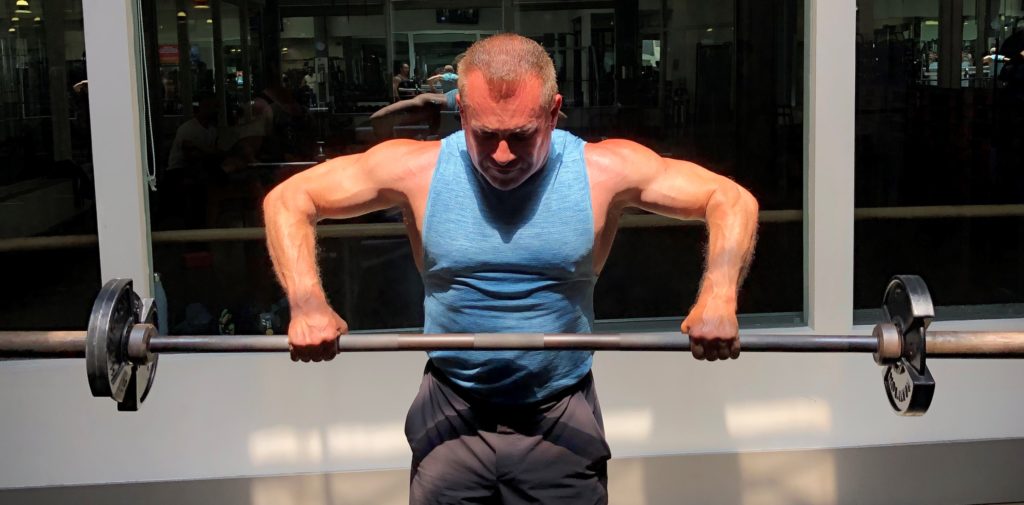
Some 50 plus clients
Weight Training Over 50 – Time To Start
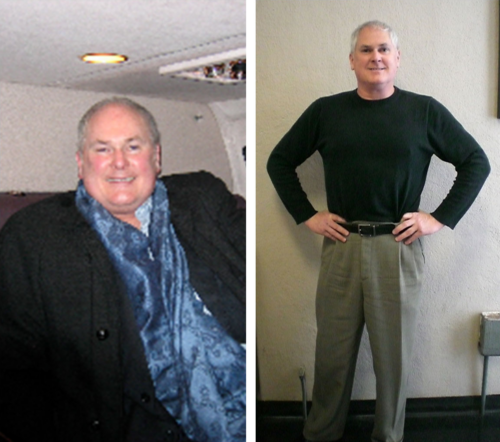
Weight Training Over 50
Weight training over 50 benefits people by preserving lean tissue that is needed for mobility in old age. Think of muscle strength as money in the bank: the more of it you have, the more options you will continue to have for leading a full, active life as you age. Another major benefit of regular weight training over 50 is health improvement and maintenance, including bone building and muscle toning since weight-bearing exercise programs your body to activate muscle tissue and deposit more calcium into your bones so that they will be strong enough to support your active lifestyle. And you don’t have to be an aspiring bodybuilder to lift weights: a twice-weekly total-body workout targeting all the major muscle groups in your legs, upper body and core is a great way for anyone to get in shape and to reap the benefits well into old age.
Physicians Recommend Strength Training for Health
When was the last time you talked to your doctor about exercise?
For some people, the answer may be “never.” In fact you should make a discussion about physical activity a priority as part of your annual well checkup. Moreover patients should feel free to ask questions about exercise at any doctor’s visit.
“A discussion about exercise often is overlooked” in doctor’s offices, says Moin Salahuddin, MD, primary care sports medicine physician at Providence Medical Institute’s Torrance Urgent Care and Primary Care Clinic. “But exercise is a great, proactive measure that can help you in so many ways. The adage I live by is: Exercise is the best medicine.”
How Much Exercise Do I Need?
According to the Centers for Disease Control and Prevention, adults ages 18 to 64 should aim for 150 minutes a week of moderate-intensity aerobic activity (or 75 minutes of vigorous-intensity aerobic activity) plus muscle-strengthening activities on two or more days a week. Adults ages 65 and older who are generally fit and have no limiting health condition can adhere to the same guidelines.
Some people may be reluctant to discuss physical activity with a doctor because they feel it’s not as important as other issues, such as health problems they may be having. Others don’t want to admit that they don’t work out. But the annual exam is the perfect time to discuss exercise, says Brenda Shen, MD, a primary care provider at Providence Medical Institute in Redondo Beach.
“People may not understand how much exercise actually improves their health,” she says. “Exercise touches everything. It improves your bone health, prevents you from getting early-onset osteoporosis, helps your heart. It helps anyone with diabetes, hypertension and cholesterol. It affects your mental health.”
Even people who are injured, have health problems or swear they don’t have time can find a way to exercise, Dr. Salahuddin says. “There is always a way to stay active regardless of injury or medical history. There are so many exercises out there that are easy on the joints.” For example, someone with an ankle sprain can exercise in a pool or perhaps do gentle stretches or yoga.
Many Americans complain that they simply don’t have time to exercise. But it’s important to do what you can, Dr. Salahuddin says. Get off the bus one stop early and walk the rest of the way. Walk the dog, taking along your kids and spouse. Plant a garden that requires you to spend some time tending to it.
“The most important thing is to find something that you like doing,” Dr. Shen says. “And if you have someone to do this with-a spouse, children, friends-that’s even better.”
As you become more comfortable with exercise, aim to reach your target heart rate during aerobic activity. That will ensure you’re getting the most benefit from exercise, she adds.
And don’t forget that physical fitness features two components: aerobic activity and strength training. About 2/3 of your workout should consist of resistance exercise, which involves weightlifting and building core muscles. You don’t have to lift weights to do strength straining however. Yoga and Pilates can also build the core muscles: those in your spine, pelvis, hips and abdominal areas.
“Aerobics alone will not provide the full results you need,” she says. “Sometimes the results of a fitness program are not as good if people are just doing aerobics. They get sprains, strains and other injuries because they are not building up their core muscles.”
Sports medicine isn’t just for athletes or people who are injured, Dr. Salahuddin says. “Preventative medicine is so key. Forming an exercise plan is important, and that’s definitely something we can do.”
Personal Training Over 50: How To Get Started

Above I talked about how adding weight training to your exercise routine will help you lose weight and get in shape faster than just aerobic-based exercise alone. Now I’m adding a few tips to help you get started:
1. Don’t look at the scale: It’s not an truly accurate representation of your body composition. It may tell you how many pounds you weigh, but not your muscle mass or your progress. As you build muscle, you may find you actually weigh more than before, but look at yourself in your clothes, see how they fit; look at the shape of your body and your muscle definition. That’s a better representation of yourself.
2. Try the “selfie” approach: Take a picture every week to monitor your progress. I’ll bet you see a lot more progress when you flip through these pictures than you do just by looking in the mirror. The camera doesn’t lie.
3. Ask your trainer to take your body fat measurements every month to monitor your progress. These numbers don’t lie, and are more accurate than your scale.
4. Delete Fear: Adding weight training into your exercise routine is the best thing you can do for yourself and your body. Some women are concerned that they’ll wind up bulking up or looking masculine if they lift weights. That’s not going to happen, unless you want it to. It takes a LOT of work to get a body like Madonna, and she looks great, by the way.
5. Eat right: Don’t forget to fuel your body. No workout in the world will get you in shape if you don’t change what, and how you eat. Add lean proteins, fresh vegetables and whole grains to your diet. Skip the refined carbohydrates, candy, sugar laden beverages, alcohol and other junk and watch the pounds of flab and blubber drop away.
Recovery Days
 As a 50 year old personal trainer and former competitive bodybuilder, I can attest to the fact that getting ripped isn’t just about pumping iron. Planned rest and recovery days are vital to your muscle development.
As a 50 year old personal trainer and former competitive bodybuilder, I can attest to the fact that getting ripped isn’t just about pumping iron. Planned rest and recovery days are vital to your muscle development.
Most new clients don’t realize how the human body works. What we do when we train is we break down the muscle tissue. All of the gains in tone, firmness, strength, muscle size and metabolism building comes from the recovery period – that’s the days and nights after the actual workout. Your body’s mechanism for self-repair is what gives us the results we are looking for.
One sure way to fail at reaching your fitness goals is to overtrain. Overtraining not only causes mental burnout and injuries, it also stalls progress. It can be a constant source of frustration when results are slow to come by even though you’re putting in constant effort. Most good trainers would agree that recovery is just as important as lifting.
Your weight training over 50 program isn’t going to be effective without pre-planned recovery time. As a matter of fact, it can actually be dangerous to ignore. Pushing past the point of fatigue will mean more injuries, inflammation and bad days.
We all know about DOMS (delayed onset muscle soreness). A day or two after a heavy lifting session you’ll probably find yourself stiff and sore. Your range of motion will be affected as will your flexibility. Without proper rest periods you’ll find injuries to become more common.
Enhance Your Recovery
- Hydration. Actually, staying hydrated is a key component in all phases of your workout program. And it’s just as important to continue to hydrate on your off days. Dehydration will slow your metabolism and delay the recovery process so keep your water bottle handy all day, and use it.
- Sleep. It’s probably hard to find anyone who gets enough sleep these days but it is crucial to your health and fitness goals. An article published by the University of New Mexico states:
“Studies show that one or two nights of poor or little sleep won’t have much impact on performance. However, consistently getting inadequate sleep, which is the case for many of us, can result in changes in hormone levels, particularly those related to stress, muscle recovery, and mood. Elevated levels of cortisol and HGH may interfere with tissue repair and growth. Over time, can could prevent a recreational or serious athlete from responding to training, and lead to injury and overtraining.”
- Nutrition. Your body does a lot for you and you need to be sure to keep it fueled properly. Recovery isn’t a free ticket to eat junk or cave in to cravings. Ensuring the proper balance between proteins, carbs and fats and you’ll reap major benefits in your recovery and progress. BCAAs really do help!
Treat your recovery days just as you would a scheduled workout day for optimal performance and gains. If you’d like professional help reaching your fitness goals contact me today. Or just make stuff up. That’s probably just as good 😉
High Performance Personal Training is dedicated to helping people enjoy the benefits of weight training over 50 and beyond. We want our clients of all ages to live the healthiest, fullest lives possible. If you live in the Los Angeles area and are ready to fully embrace a new, healthy lifestyle under the guidance of a highly qualified certified personal trainer, contact us today.

